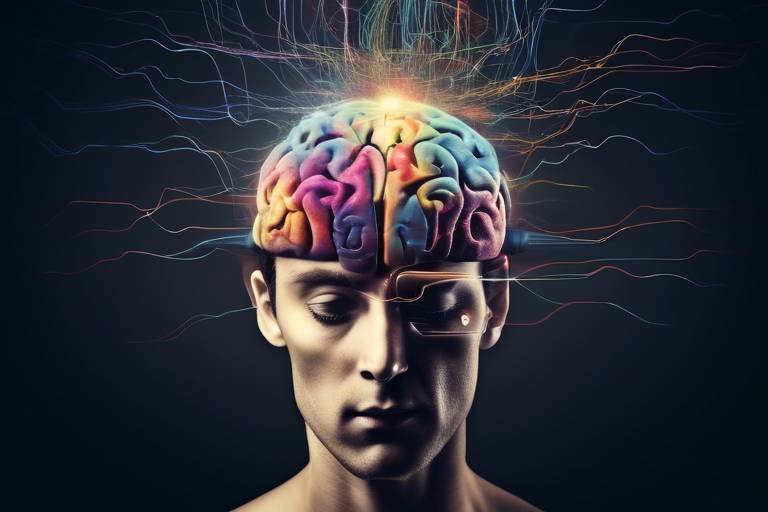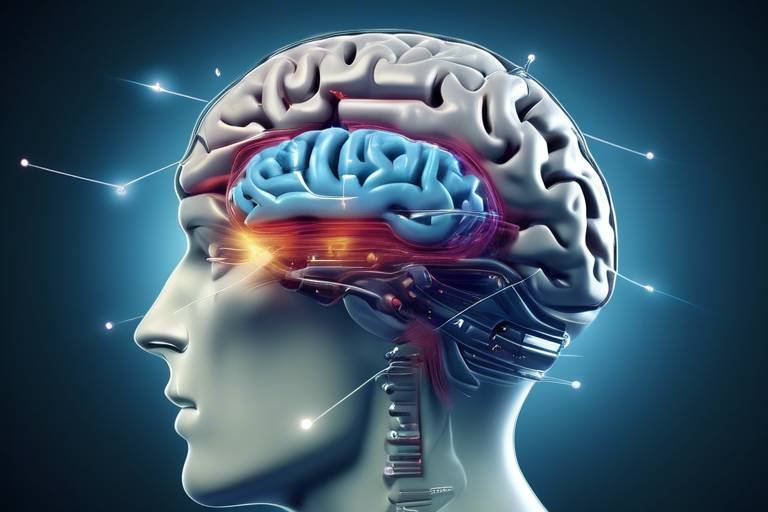Demystifying the Power of the Subconscious Mind
Have you ever wondered why you react a certain way in specific situations, even when you consciously want to behave differently? The answer often lies in the subconscious mind, a powerful yet mysterious aspect of our psyche that operates beneath the surface of our awareness. This article explores the depths of the subconscious mind, unveiling its functions and the profound influence it has on our thoughts and behaviors. By understanding this hidden force, we can unlock the doors to personal growth and transformation.
The subconscious mind is like a vast ocean, teeming with memories, emotions, and automatic processes that govern our daily lives. It operates quietly in the background, managing everything from our breathing to our emotional responses. While we may not be consciously aware of it, this part of our mind is constantly at work, shaping our perceptions and actions. It stores our past experiences and learned behaviors, influencing how we react to new situations. Think of it as the hard drive of your brain, where everything is stored, but not everything is readily accessible. Understanding its characteristics helps us appreciate how it shapes our daily experiences.
To truly grasp the power of the subconscious, it's essential to distinguish it from the conscious mind. The conscious mind is like the tip of the iceberg, visible and easily accessible, while the subconscious is the much larger portion lurking beneath the surface. The conscious mind is responsible for our active thoughts, decision-making, and problem-solving, while the subconscious mind handles automatic processes and reactions. This section will dive deeper into their differences, functions, and how they interact to shape our perceptions and actions.
Memory plays a crucial role in the workings of the subconscious mind. It influences our reactions and decisions, often without us even realizing it. Memories are not just random data points; they are the building blocks of our identity and behavior. When we encounter new experiences, our subconscious mind retrieves relevant memories, shaping our responses. For instance, if you had a negative experience with a dog in childhood, your subconscious may trigger fear when you see a similar dog later in life. This section will explore how memories are stored and retrieved, impacting our behavior and emotional responses.
Understanding the different types of memory is essential for grasping how the subconscious processes information. There are two primary categories: explicit memory and implicit memory. Explicit memory involves conscious recollection of facts and events, while implicit memory influences our behaviors and skills without conscious awareness. For example, you might not remember the exact moment you learned to ride a bike, but your ability to do so is stored in your implicit memory. This section will discuss these distinctions and their relevance to our everyday lives.
Have you ever wondered how memories are formed and recalled? Understanding this process can illuminate the workings of the subconscious mind. Memories are formed through a complex interplay of encoding, storage, and retrieval. When we experience something, our brain encodes the information, creating neural connections. Over time, these connections are strengthened or weakened, affecting how easily we can recall the memory later. This part will explain these processes and their implications for personal development, highlighting the importance of memory in shaping our subconscious landscape.
Now that we have a grasp on what the subconscious mind is and how it operates, let’s explore how we can influence it for positive change. Techniques such as affirmations, visualization, and meditation can reshape our beliefs and behaviors, allowing us to harness the power of our subconscious. By regularly practicing these techniques, we can overwrite negative thought patterns and cultivate a mindset that supports our goals and aspirations. This section will cover various methods to influence the subconscious mind, paving the way for personal transformation.
Beliefs held in the subconscious can significantly affect our reality. They act as a lens through which we view the world, shaping our interpretations and responses. These beliefs are often formed in childhood, influenced by our experiences and the messages we receive from our environment. Understanding how these beliefs are formed and their power in shaping our life experiences can empower us to take control of our narratives.
Limiting beliefs can be like heavy chains holding us back from reaching our full potential. They often stem from past experiences or societal conditioning, leading us to doubt our abilities and worth. Identifying these beliefs is the first step in overcoming them. By challenging and reframing these negative thoughts, we can unlock our potential and achieve our goals. This section will explore practical strategies for recognizing and dismantling limiting beliefs, enabling personal growth and success.
On the flip side, empowering beliefs can enhance our confidence and motivation. These beliefs serve as the fuel that drives us toward our goals, providing the resilience needed to overcome obstacles. Cultivating positive beliefs is essential for personal development and well-being. This part will focus on techniques to foster empowering beliefs, helping you to create a mindset that supports your aspirations and dreams.
Applying knowledge of the subconscious mind can lead to transformative outcomes in our lives. By integrating the insights gained from understanding the subconscious, we can develop practical strategies to harness its power. Whether it's through daily affirmations, visualization exercises, or mindfulness practices, there are numerous ways to tap into this hidden resource. This section will provide actionable tips for leveraging the subconscious mind in everyday life, helping you achieve your desired goals.
- What is the subconscious mind? The subconscious mind is the part of our mind that operates below the level of conscious awareness, controlling automatic processes and storing memories.
- How does the subconscious influence behavior? The subconscious influences behavior by retrieving memories and learned responses, often dictating our reactions in various situations.
- Can I change my subconscious beliefs? Yes, techniques such as affirmations, visualization, and meditation can help reshape subconscious beliefs for positive change.
- What are limiting beliefs? Limiting beliefs are negative thoughts that hinder personal growth and success, often rooted in past experiences.
- How can I cultivate empowering beliefs? You can cultivate empowering beliefs by challenging negative thoughts, practicing self-affirmation, and surrounding yourself with positive influences.

The Nature of the Subconscious Mind
The subconscious mind is like the backstage crew of a grand theater production, working tirelessly behind the scenes while we take center stage. It operates beneath our conscious awareness, managing a myriad of automatic processes that we often take for granted. Think about it: when you drive a car, you don’t consciously think about every action—steering, braking, or shifting gears. Instead, your subconscious takes over, allowing you to focus on the road ahead.
This hidden part of our psyche is responsible for storing not just memories but also our beliefs, habits, and emotional responses. It acts as a vast database, cataloging our experiences and shaping how we interact with the world. The subconscious mind is not just a passive storage unit; it actively influences our thoughts, feelings, and behaviors. For instance, if you’ve had a negative experience with public speaking, your subconscious may trigger feelings of anxiety whenever you find yourself in a similar situation, even if you consciously want to feel confident.
One of the most fascinating aspects of the subconscious is its ability to process information without our conscious input. It’s like a powerful computer running in the background, analyzing data and making decisions based on past experiences. This can be incredibly beneficial, allowing us to navigate our daily lives efficiently. However, it can also lead to challenges when negative patterns or limiting beliefs are stored within. Understanding this dynamic is crucial for personal growth.
To illustrate the nature of the subconscious mind, consider the following characteristics:
- Automatic Processes: The subconscious handles routine tasks that don’t require conscious thought, freeing up mental space for more complex decision-making.
- Emotional Responses: It plays a key role in our emotional reactions, often dictating how we feel in various situations based on past experiences.
- Memory Storage: Our subconscious mind stores all memories, both positive and negative, influencing our perceptions and behaviors.
- Belief Formation: It shapes our beliefs about ourselves and the world, which can either empower us or hold us back.
In summary, the subconscious mind is a powerful force that operates quietly yet profoundly influences our daily lives. By understanding its nature, we can begin to unravel the complexities of our thoughts and behaviors, paving the way for personal transformation. So, the next time you find yourself reacting to a situation without understanding why, remember that your subconscious is at work, shaping your reality in ways you might not even realize.
Q1: What is the subconscious mind?
The subconscious mind is the part of our mind that operates below the level of conscious awareness, managing automatic processes and storing memories, beliefs, and habits.
Q2: How does the subconscious mind influence behavior?
It influences behavior by triggering emotional responses and reactions based on stored memories and beliefs, often without our conscious awareness.
Q3: Can I change my subconscious beliefs?
Yes! Techniques such as affirmations, visualization, and meditation can help reshape your subconscious beliefs and lead to positive changes in your life.

The Subconscious vs. Conscious Mind
The distinction between the subconscious and conscious mind is crucial for anyone seeking to understand how their thoughts and behaviors are shaped. Think of the conscious mind as the tip of the iceberg, the part that's visible above the water. It's where our active thinking occurs, where we make decisions, solve problems, and engage with the world around us. In contrast, the subconscious mind operates below the surface, quietly influencing our actions and reactions without us even realizing it. This hidden powerhouse is responsible for managing our automatic functions, like breathing and blinking, and it also stores our memories, beliefs, and experiences.
To illustrate the differences further, consider the following characteristics:
| Aspect | Conscious Mind | Subconscious Mind |
|---|---|---|
| Awareness | Active awareness of thoughts and feelings | Not actively aware; operates in the background |
| Function | Decision-making and problem-solving | Stores memories, beliefs, and automatic processes |
| Processing | Logical and analytical | Emotional and intuitive |
| Time Orientation | Present-focused | Past-focused (memories and experiences) |
This interplay between the two minds is fascinating. Our conscious mind might decide to pursue a new career, but if the subconscious holds limiting beliefs about our abilities, it can sabotage our efforts without us even realizing it. Have you ever experienced a moment where you felt a sudden urge to back away from an opportunity? That could very well be your subconscious mind at work, pulling the strings based on its underlying beliefs.
Moreover, the relationship between these two aspects of our psyche is not static; it’s dynamic and constantly evolving. The conscious mind can influence the subconscious through repetition and intention. For example, when you practice affirmations or engage in visualization exercises, you are consciously attempting to reshape the beliefs that reside in your subconscious. This dance between the two can lead to profound personal transformation.
In conclusion, understanding the differences and interactions between the subconscious and conscious mind is essential for anyone looking to harness the full potential of their mind. By recognizing how these two facets work together, we can take steps to align our conscious intentions with our subconscious beliefs, paving the way for a more fulfilling and successful life.

The Role of Memory
Memory is like the foundation of a house; it supports our thoughts, decisions, and actions. The subconscious mind is a vast repository of experiences, emotions, and learned behaviors, all stored away like treasures in a hidden vault. This intricate system influences our reactions and decisions, often without us even realizing it. Have you ever found yourself feeling anxious in a certain situation without knowing why? That could be your subconscious mind pulling from a memory that you might not even consciously remember!
When we think about memory, it’s essential to recognize that it plays a crucial role in shaping our identities and guiding our life choices. Memories are not just static recordings; they are dynamic and can change over time. Each time we recall a memory, we might alter it slightly, adding new feelings or insights that can reshape our understanding of past events. This process is akin to editing a movie—the more we watch it, the more we might change the scenes to fit our current narrative.
There are two primary types of memory that the subconscious mind utilizes: explicit memory and implicit memory. Explicit memory involves facts and experiences that we can consciously recall, like your first day at school or your favorite vacation. In contrast, implicit memory is more about the unconscious skills and learned behaviors, such as riding a bike or tying your shoes. These memories influence our actions without our awareness, guiding us through daily life with a sense of familiarity and ease.
Understanding how memories are formed and recalled is vital for personal growth. The process begins with encoding, where information is transformed into a format that can be stored. Next comes storage, where these encoded memories are saved for future use, and finally, we have retrieval, the act of accessing these memories when needed. This cycle is not just about remembering facts; it also involves emotions and sensory experiences that can trigger powerful responses in our subconscious mind.
For instance, a simple smell can evoke a flood of memories, transporting us back to a specific moment in time. This sensory connection highlights how intertwined our memories are with our feelings, making them a potent force in shaping our behaviors and reactions. Understanding this relationship can help us harness the power of our memories for personal development.
In conclusion, memory is not just a passive storage system; it actively shapes our perceptions, influences our decisions, and ultimately defines who we are. By recognizing the role of memory in our subconscious mind, we can start to unlock its potential, leading to a deeper understanding of ourselves and paving the way for transformative growth.
- What is the difference between explicit and implicit memory?
Explicit memory involves conscious recollection of facts and events, while implicit memory influences our behavior unconsciously, like riding a bike.
- How can I improve my memory?
Techniques such as visualization, repetition, and mnemonic devices can enhance memory retention and recall.
- Can memories change over time?
Yes, each time we recall a memory, it can be altered by new experiences or emotions, making memory a fluid and dynamic process.

Types of Memory
The human brain is a fascinating and intricate organ, and one of its most intriguing aspects is how it handles memory. Memory isn't a one-size-fits-all phenomenon; rather, it can be categorized into several types, each serving its own unique function. Understanding these types can provide insight into how our subconscious mind processes experiences and influences our behavior.
Broadly speaking, memory can be divided into two primary categories: explicit memory and implicit memory. Explicit memory refers to the conscious recollection of information, such as facts and events. This type of memory is what you tap into when you need to recall a specific detail, like your best friend's birthday or the capital of France. It’s akin to pulling a book off a shelf to find a particular passage; you know exactly what you’re looking for and can retrieve it with intention.
On the other hand, implicit memory operates beneath the surface of conscious awareness. It encompasses skills and procedures that we perform automatically, often without thinking. For example, riding a bicycle or typing on a keyboard are activities that rely on implicit memory. You might not consciously recall every detail of how you learned to ride a bike, but your body knows how to do it instinctively. This type of memory is like a well-tuned machine, efficiently performing tasks based on past experiences without requiring active thought.
To further elaborate, let's consider some specific types of explicit and implicit memory:
- Explicit Memory:
- Episodic Memory: This is the memory of personal experiences and specific events, including the time and place they occurred. Think of it as your brain's diary, capturing life’s moments.
- Semantic Memory: This type pertains to facts and general knowledge about the world, such as knowing that water boils at 100 degrees Celsius. It’s your mental encyclopedia.
- Implicit Memory:
- Procedural Memory: This involves knowing how to perform tasks, like playing an instrument or driving a car. It’s the muscle memory that allows us to execute actions without conscious thought.
- Priming: This is the process where exposure to one stimulus influences the response to another stimulus, often unconsciously. For instance, if you hear the word "yellow," you might be quicker to recognize the word "banana" afterward.
Understanding these types of memory can illuminate how the subconscious mind operates. For instance, implicit memory often shapes our habits and reactions, while explicit memory allows us to learn and adapt through conscious effort. By recognizing the interplay between these memory types, we can better appreciate how our past experiences are woven into the fabric of our current behaviors and beliefs.
In essence, the types of memory not only define how we store information but also how we engage with the world around us. By leveraging our understanding of these memory categories, we can work towards enhancing our cognitive abilities and enriching our lives.

Memory Formation and Recall
Memory formation is a fascinating process that occurs within the intricate networks of our brain. It’s like a complex tapestry woven from experiences, emotions, and knowledge, each thread representing a moment in time. When we encounter an event, our brain encodes this information through a series of steps: encoding, storage, and retrieval. Understanding how these processes work can shed light on how our subconscious mind shapes our behaviors and influences our lives.
During the encoding phase, the brain takes in sensory information and converts it into a format that can be stored. This is where attention plays a crucial role. Think of it as a filter: if we’re not paying attention, the information might slip through unnoticed, much like a leaf falling from a tree without us ever seeing it. Once the information is encoded, it moves into the storage phase, where it’s kept in various types of memory systems, including short-term and long-term memory. This is akin to placing a book on a shelf; the more frequently we revisit that book, the easier it becomes to recall its contents.
Retrieval is the final step, where we access the stored information. This process can be influenced by numerous factors, such as the context in which we learned the information and our emotional state at the time. For instance, have you ever noticed how a particular song can bring back vivid memories? That’s your brain retrieving information based on the cues associated with that song. The interplay between these stages of memory formation is not only crucial for our daily functioning but also highlights the powerful role of the subconscious mind in shaping our thoughts and actions.
To illustrate the memory formation process, consider the following table:
| Stage | Description |
|---|---|
| Encoding | The process of converting sensory input into a form that can be stored in memory. |
| Storage | The maintenance of encoded information over time in various memory systems. |
| Retrieval | The process of accessing and bringing stored information into conscious awareness. |
In summary, memory formation and recall are not just mechanical processes; they are dynamic and influenced by our experiences and emotional states. By understanding how memories are formed and retrieved, we can better appreciate the underlying mechanisms of our subconscious mind. This knowledge empowers us to harness the power of memory in our personal development journey, enabling us to reshape our beliefs and behaviors for the better.
- What is the difference between short-term and long-term memory?
Short-term memory holds information temporarily for immediate use, while long-term memory stores information for extended periods, potentially for a lifetime. - Can memories be altered?
Yes, memories can be influenced and altered over time, often by new experiences or information that contradicts the original memory. - How can I improve my memory?
Techniques such as repetition, visualization, and mnemonic devices can enhance memory formation and recall.

Influencing the Subconscious Mind
Have you ever noticed how a catchy jingle can stick in your head long after you've heard it? That's the power of the subconscious mind at work! It’s like a sponge, soaking up everything around us, even when we’re not consciously aware of it. This fascinating aspect of our psyche can be harnessed to create positive change in our lives. So, how do we go about influencing this hidden powerhouse? Let’s dive into some effective techniques that can help you reshape your beliefs and behaviors.
One of the most popular methods is the use of affirmations. These are positive statements that you repeat to yourself, designed to challenge and overcome self-sabotaging thoughts. Think of affirmations as seeds; when you plant them in the fertile soil of your subconscious, they can grow into powerful beliefs. For example, if you struggle with self-doubt, you might say, “I am confident and capable.” By consistently repeating this affirmation, you can gradually reshape your self-image and boost your confidence.
Another powerful technique is visualization. This involves creating a mental image of your desired outcome, making it feel as real as possible. Imagine you’re an athlete preparing for a big game; you visualize every detail, from the sound of the crowd to the sensation of scoring the winning goal. By regularly engaging in visualization, you can train your subconscious mind to align with your goals, making your aspirations feel more attainable. It’s like setting a GPS for your brain, guiding it toward success.
Meditation is yet another effective tool for influencing the subconscious mind. By quieting the chatter of the conscious mind, meditation allows you to access deeper layers of thought and emotion. This practice can help you identify limiting beliefs and replace them with empowering ones. Imagine your mind as a busy highway; meditation is like a traffic light that helps you slow down and navigate through the chaos, allowing for clarity and insight.
To sum it up, influencing the subconscious mind is about consistent practice and dedication. Here are some key techniques to consider:
- Affirmations: Repeat positive statements to reshape your beliefs.
- Visualization: Create vivid mental images of your goals to align your subconscious with your desires.
- Meditation: Quiet your mind to access deeper thoughts and emotions.
By incorporating these techniques into your daily routine, you can unlock the potential of your subconscious mind. Imagine the transformation you could experience as you replace doubt with confidence, fear with courage, and limitation with possibility. It's not just about thinking positively; it's about rewiring your brain to support your dreams and aspirations. So, what are you waiting for? Start influencing your subconscious mind today!
1. How long does it take to see results from affirmations?
Results can vary from person to person. Some may notice changes in their mindset within weeks, while others may take months. Consistency is key!
2. Can anyone practice visualization?
Absolutely! Visualization is a skill that anyone can develop with practice. The more you do it, the more effective it becomes.
3. Is meditation necessary for influencing the subconscious mind?
While meditation is a powerful tool, it’s not the only way to influence your subconscious. You can use affirmations and visualization independently as well.
4. What if I struggle with negative thoughts?
It’s normal to have negative thoughts. The goal is to acknowledge them and consciously replace them with positive affirmations and visualizations.
5. How can I stay motivated to practice these techniques?
Setting specific goals and tracking your progress can help keep you motivated. Celebrate small victories along the way!

The Impact of Beliefs
Beliefs are like the invisible threads that weave the fabric of our reality. They shape how we perceive the world around us and influence our behaviors in profound ways. Have you ever thought about why you react a certain way in a given situation? Often, it's not just about the circumstances but the underlying beliefs that guide your reactions. These beliefs, many of which reside in our subconscious mind, can either propel us forward or hold us back.
To truly understand the impact of beliefs, we need to recognize how they are formed. From a young age, we absorb messages from our environment—family, friends, media, and society at large. These messages can create a set of beliefs that dictate our self-worth, capabilities, and the possibilities we see for ourselves. For instance, if you grew up hearing that "money doesn't grow on trees," you might develop a belief that wealth is unattainable, which can limit your financial aspirations.
Interestingly, beliefs can be categorized into two main types: limiting beliefs and empowering beliefs. Limiting beliefs are those that constrain our potential. They often stem from negative experiences or societal conditioning. On the other hand, empowering beliefs can enhance our confidence and drive, pushing us to chase our dreams. The challenge lies in identifying which beliefs serve us and which ones keep us stuck.
Consider the following table that illustrates the differences between limiting and empowering beliefs:
| Type of Belief | Characteristics | Examples |
|---|---|---|
| Limiting Beliefs | Restrictive, negative, self-sabotaging | "I am not good enough," "I will never succeed." |
| Empowering Beliefs | Positive, motivating, growth-oriented | "I am capable of achieving my goals," "I deserve success." |
So, how do these beliefs manifest in our daily lives? They often dictate our emotional responses and decision-making processes. If you believe that you are unworthy of love, you may find yourself sabotaging relationships or pushing people away. Conversely, if you hold a belief that you are deserving of happiness, you’re more likely to pursue opportunities that align with that belief.
Moreover, beliefs can create a self-fulfilling prophecy. When we expect certain outcomes based on our beliefs, we tend to act in ways that align with those expectations. For example, if you believe that public speaking is terrifying, you might avoid opportunities to speak, which reinforces your fear. However, if you shift that belief to see public speaking as an opportunity for growth, you may seek out those experiences, ultimately becoming more confident.
In summary, the beliefs we hold in our subconscious mind significantly impact our lives. They can shape our reality, influence our decisions, and affect our overall well-being. By becoming aware of our beliefs and actively working to reshape limiting ones into empowering beliefs, we can unlock our true potential and create a more fulfilling life.
- What are limiting beliefs? Limiting beliefs are negative thoughts or convictions that prevent individuals from realizing their full potential.
- How can I change my beliefs? Techniques such as affirmations, visualization, and cognitive restructuring can help shift limiting beliefs to empowering ones.
- Why are beliefs important? Beliefs shape our perceptions and actions, influencing our emotional responses and overall life experiences.

Limiting Beliefs
Have you ever felt like you were stuck in a rut, unable to move forward despite your best efforts? This feeling often stems from —those nagging thoughts that whisper in your ear, telling you what you can’t do. These beliefs are like invisible chains that hold you back from reaching your full potential. They can be deeply ingrained, often formed during childhood or as a result of past experiences, and they can significantly influence your actions and decisions.
For instance, you might believe that you're not good enough to pursue a promotion at work, or that you’ll never be able to maintain a healthy lifestyle. These thoughts can become self-fulfilling prophecies, leading you to avoid opportunities that could lead to growth and success. So, how do we identify these limiting beliefs? It often starts with self-reflection. Ask yourself:
- What negative thoughts do I frequently have about myself?
- Are there patterns in my life where I feel I can’t succeed?
- What fears hold me back from pursuing my dreams?
Once you've identified these beliefs, the next step is to challenge them. This process is akin to being your own detective, investigating the origins of these thoughts and questioning their validity. For example, if you believe you’re not smart enough to change careers, remind yourself of times when you’ve learned new skills successfully. By reframing these thoughts, you can start to dismantle the power they hold over you.
Moreover, it’s essential to replace limiting beliefs with empowering ones. This can be achieved through techniques such as affirmations and visualization. When you repeat positive statements about yourself, you begin to rewire your brain. Instead of saying, “I can’t do this,” try affirming, “I am capable of achieving my goals.” Over time, this practice can lead to a profound transformation in how you view yourself and your potential.
To illustrate the impact of limiting beliefs, consider the following table:
| Limiting Belief | Empowering Belief |
|---|---|
| I’m not good enough to succeed. | I have the skills and determination to succeed. |
| I will always fail at relationships. | I can learn and grow from my past experiences. |
| I don’t deserve happiness. | I am worthy of love and happiness. |
In conclusion, breaking free from limiting beliefs is a journey that requires patience and persistence. By acknowledging these beliefs, challenging their validity, and replacing them with empowering thoughts, you can unlock your potential and pave the way for personal growth and success. Remember, the mind is a powerful tool—what you believe can shape your reality. So, why not choose beliefs that elevate you rather than hold you back?
Q: What are limiting beliefs?
A: Limiting beliefs are negative thoughts or convictions that restrict your potential and hinder personal growth. They often stem from past experiences or societal conditioning.
Q: How can I identify my limiting beliefs?
A: Self-reflection is key. Ask yourself about recurring negative thoughts and patterns in your life that prevent you from pursuing your goals.
Q: What techniques can help me overcome limiting beliefs?
A: Techniques such as affirmations, visualization, and cognitive restructuring can help you challenge and replace limiting beliefs with empowering ones.
Q: Can limiting beliefs affect my relationships?
A: Absolutely. Limiting beliefs can impact how you view yourself and others, leading to difficulties in forming and maintaining healthy relationships.
Q: How long does it take to overcome limiting beliefs?
A: The time it takes varies for each individual. Consistent practice and a commitment to personal growth can lead to significant changes over time.

Empowering Beliefs
Empowering beliefs are like the wind beneath your wings, propelling you towards your dreams and aspirations. They are the positive thoughts and convictions that fuel your motivation and enhance your self-esteem. Imagine waking up each day with a sense of purpose, believing that you have the power to shape your reality. This is the magic of empowering beliefs. They can transform your mindset from one of doubt and fear to one of confidence and possibility.
So, how do these beliefs come to be? Often, they are cultivated through experiences, education, and personal reflection. When you surround yourself with positivity and supportive individuals, you are more likely to develop a belief system that encourages growth and success. can take many forms, such as:
- I am capable of achieving my goals.
- I deserve happiness and success.
- Challenges are opportunities for growth.
These beliefs act as a foundation for your actions. When you believe in your capabilities, you are more likely to take risks and step out of your comfort zone. Think of empowering beliefs as the seeds of potential that, when nurtured, can blossom into incredible achievements. However, it’s essential to recognize that cultivating these beliefs requires effort and consistency. Just like a garden needs sunlight and water to thrive, your mind needs positive reinforcement and encouragement.
One effective way to foster empowering beliefs is through affirmations. These are positive statements that you repeat to yourself regularly, helping to rewire your subconscious mind. For example, saying “I am worthy of love and success” can gradually replace negative self-talk and build a healthier self-image. Additionally, visualization techniques can be incredibly powerful. By picturing yourself succeeding, you create a mental blueprint that your subconscious mind can follow, making it easier to manifest those outcomes in real life.
Another important aspect is surrounding yourself with supportive communities and mentors. Engaging with individuals who uplift you and share similar goals can reinforce your empowering beliefs. When you see others achieving their dreams, it serves as a powerful reminder that you can do the same. Remember, the company you keep can either lift you up or pull you down, so choose wisely!
In conclusion, empowering beliefs are crucial for personal development. They shape your reality and influence your actions, leading to a more fulfilling life. By consciously cultivating these beliefs through affirmations, visualization, and supportive relationships, you can unlock your full potential and create the life you desire.
What are empowering beliefs?
Empowering beliefs are positive convictions that enhance your self-esteem and motivate you to pursue your goals. They help you overcome self-doubt and foster a mindset geared towards success.
How can I cultivate empowering beliefs?
You can cultivate empowering beliefs through practices such as affirmations, visualization, and surrounding yourself with supportive people who encourage your growth.
Why are empowering beliefs important?
Empowering beliefs are important because they shape your actions and decisions, helping you to take risks and pursue opportunities that can lead to personal and professional success.
Can empowering beliefs change my life?
Yes! By changing your beliefs, you can change your mindset, which in turn can lead to significant changes in your life, including improved confidence and enhanced motivation.

Practical Applications
Understanding the subconscious mind is not just an academic exercise; it has real-world applications that can transform your life. Imagine having the ability to tap into a reservoir of potential and creativity that lies just beneath the surface of your awareness. By harnessing the power of your subconscious, you can influence your thoughts, behaviors, and ultimately, your reality. So, how do we go about this? Let’s dive into some practical strategies that can help you unlock this hidden power.
One of the most effective techniques is the use of affirmations. These are positive statements that you repeat to yourself, often in the present tense, to encourage a shift in mindset. For example, if you struggle with self-doubt, you might say, “I am confident and capable.” By consistently repeating this affirmation, you begin to overwrite the negative beliefs stored in your subconscious. It’s like planting a seed in fertile soil; with time, patience, and nurturing, it will grow into a strong, resilient plant.
Another powerful method is visualization. This technique involves creating a mental image of your goals and desires. Picture yourself achieving what you want, whether it's landing that dream job, improving your health, or enhancing your relationships. Visualization works because the subconscious mind cannot differentiate between reality and imagination. When you vividly imagine achieving your goals, you create a blueprint that your subconscious can work towards. So, grab a quiet moment, close your eyes, and let your imagination run wild!
Moreover, meditation is an excellent way to connect with your subconscious mind. It allows you to quiet the chatter of your conscious thoughts and tap into deeper layers of awareness. Regular meditation can help you become more attuned to your inner self, revealing insights and feelings that may have been buried. As you meditate, you might find that certain memories or beliefs come to the surface, giving you the opportunity to address and transform them.
To make these techniques more effective, consider integrating them into your daily routine. For instance, you might start your day with affirmations, take a few minutes to visualize your goals during lunch, and end the day with a calming meditation session. Consistency is key! The more you practice these techniques, the more you’ll notice changes in your mindset and behavior. Here’s a simple schedule you could follow:
| Time of Day | Activity |
|---|---|
| Morning | Affirmations |
| Afternoon | Visualization |
| Evening | Meditation |
Lastly, remember that the journey to harnessing the power of your subconscious mind is deeply personal. What works for one person may not work for another. It’s essential to experiment with different techniques and find what resonates with you. Keep a journal of your experiences; this will not only help you track your progress but also allow you to reflect on the changes you are experiencing. Over time, you may find that your subconscious mind is not just a passive storehouse of memories, but an active participant in creating your reality.
- What are affirmations, and how do they work? Affirmations are positive statements that help to challenge and overcome negative thoughts. By repeating them regularly, you can influence your subconscious mind to adopt these beliefs.
- Can visualization really make a difference? Yes! Visualization can enhance motivation and focus, helping your subconscious mind work towards your goals by creating a mental image of success.
- How can meditation help with subconscious exploration? Meditation allows you to quiet your mind, creating space for deeper thoughts and feelings to surface, thus facilitating a connection with your subconscious.
Frequently Asked Questions
- What is the subconscious mind?
The subconscious mind is a powerful part of our psyche that operates below our conscious awareness. It manages automatic processes, stores memories, and influences our thoughts and behaviors without us even realizing it. Think of it as a vast library of experiences, emotions, and learned behaviors that shape how we react to the world around us.
- How does the subconscious mind differ from the conscious mind?
The subconscious mind works behind the scenes, handling processes that we don't consciously think about, like breathing or driving a car on autopilot. In contrast, the conscious mind is where our active thoughts occur, like decision-making and problem-solving. They interact constantly, with the subconscious influencing our conscious thoughts and actions.
- Can I change my subconscious beliefs?
Absolutely! You can reshape your subconscious beliefs through various techniques like affirmations, visualization, and meditation. These methods help retrain your brain, allowing you to replace limiting beliefs with empowering ones that support your personal growth and aspirations.
- What are limiting beliefs?
Limiting beliefs are negative thoughts or assumptions that hold you back from achieving your full potential. They often stem from past experiences and can create barriers in your life. Identifying these beliefs is the first step in overcoming them, allowing you to unlock new opportunities and possibilities.
- What is the role of memory in the subconscious mind?
Memory plays a crucial role in how the subconscious mind functions. It stores both explicit memories (like facts and experiences) and implicit memories (like skills and habits). These memories influence our reactions, decisions, and emotional responses, often without us being aware of their impact.
- How can I practically apply knowledge of the subconscious mind?
You can apply knowledge of the subconscious mind in various ways, such as setting clear intentions, using positive affirmations, and practicing mindfulness. By being aware of your subconscious patterns, you can create strategies that align with your goals, leading to transformative outcomes in your life.
- What are empowering beliefs?
Empowering beliefs are positive thoughts and convictions that enhance your confidence and motivation. They support your goals and well-being, enabling you to approach challenges with a growth mindset. Cultivating these beliefs can lead to significant personal development and a more fulfilling life.



















